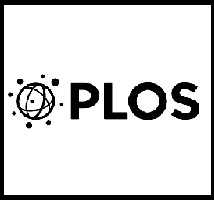Abstract
Objective To analyze associations of maternal, fetal, gestational, and perinatal factors with necrotizing enterocolitis in a matched case-control study based on routinely collected, nationwide register data.
Study design All infants born in 1987 through 2009 with a diagnosis of necrotizing enterocolitis in any of the Swedish national health care registers were identified. For each case up to 6 controls, matched for birth year and gestational age, were selected. The resulting study population consisted of 720 cases and 3,567 controls. Information on socioeconomic data about the mother, maternal morbidity, pregnancy related diagnoses, perinatal diagnoses of the infant, and procedures in the perinatal period, was obtained for all cases and controls and analyzed with univariable and multivariable logistic regressions for the whole study population as well as for subgroups according to gestational age.
Results In the study population as a whole, we found independent positive associations with necrotizing enterocolitis for isoimmunization, fetal distress, cesarean section, neonatal bacterial infection including sepsis, erythrocyte transfusion, persistent ductus arteriosus, cardiac malformation, gastrointestinal malformation, and chromosomal abnormality. Negative associations were found for maternal weight, preeclampsia, maternal urinary infection, premature rupture of the membranes, and birthweight. Different patterns of associations were seen in the subgroups of different gestational age.
Conclusion With some interesting exceptions, especially in negative associations, the results of this large, population based study, are in keeping with earlier studies. Although restrained by the limitations of register data, the findings mirror conceivable pathophysiological processes and underline that NEC is a multifactorial disease.
Introduction
Necrotizing enterocolitis (NEC) remains a challenge in neonatal care. The incidence rate of NEC in Sweden during 1987 through 2009 was 0.34 in 1,000 live births, with an increasing trend, partly explained by increased survival of the most premature but also seen in higher gestational ages (GA)[1]. The etiology is multifactorial and may differ according to the degree of maturity of the patient[2]. Prematurity and low birthweight are the most consistent predisposing factors, whereas other risk factors vary with GA,[3,4] as well as between study populations, and the results of previous studies are sometimes contradictory. Pathophysiologically, the complex interactions of the innate immunity system and colonizing bacteria, pro-inflammatory factors and modulatory systems, are deranged[5,6]. The immaturity of intestinal motility and digestion, structural and biochemical barrier functions as well as circulatory regulation contribute to the vulnerability[5,6]. The result is hemorrhagic and necrotizing inflammation, bacterial overgrowth and translocation of bacteria to the intestinal wall and systemic circulation[7]. The presence of bacteria is thus an important prerequisite in the pathogenesis of NEC, but their role as contagions is disputable. Reports of seasonal variation in incident rates, episodic outbreaks and clustering of NEC,[1,8] however, suggest a role for transmissible infectious agents or other environmental factors. Conclusion Our results support the notion that NEC is a common pathophysiological pathway of multifactorial etiology, rather than a uniform disease entity. Some of the associations identified in this study seem to be primarily related to an unspecific vulnerability, others may have more direct pathophysiologic associations with NEC, and some may affect both. Differences in management of antenatal and perinatal complications may influence the impact of certain risk factors and contribute to the disparate results of different studies.








